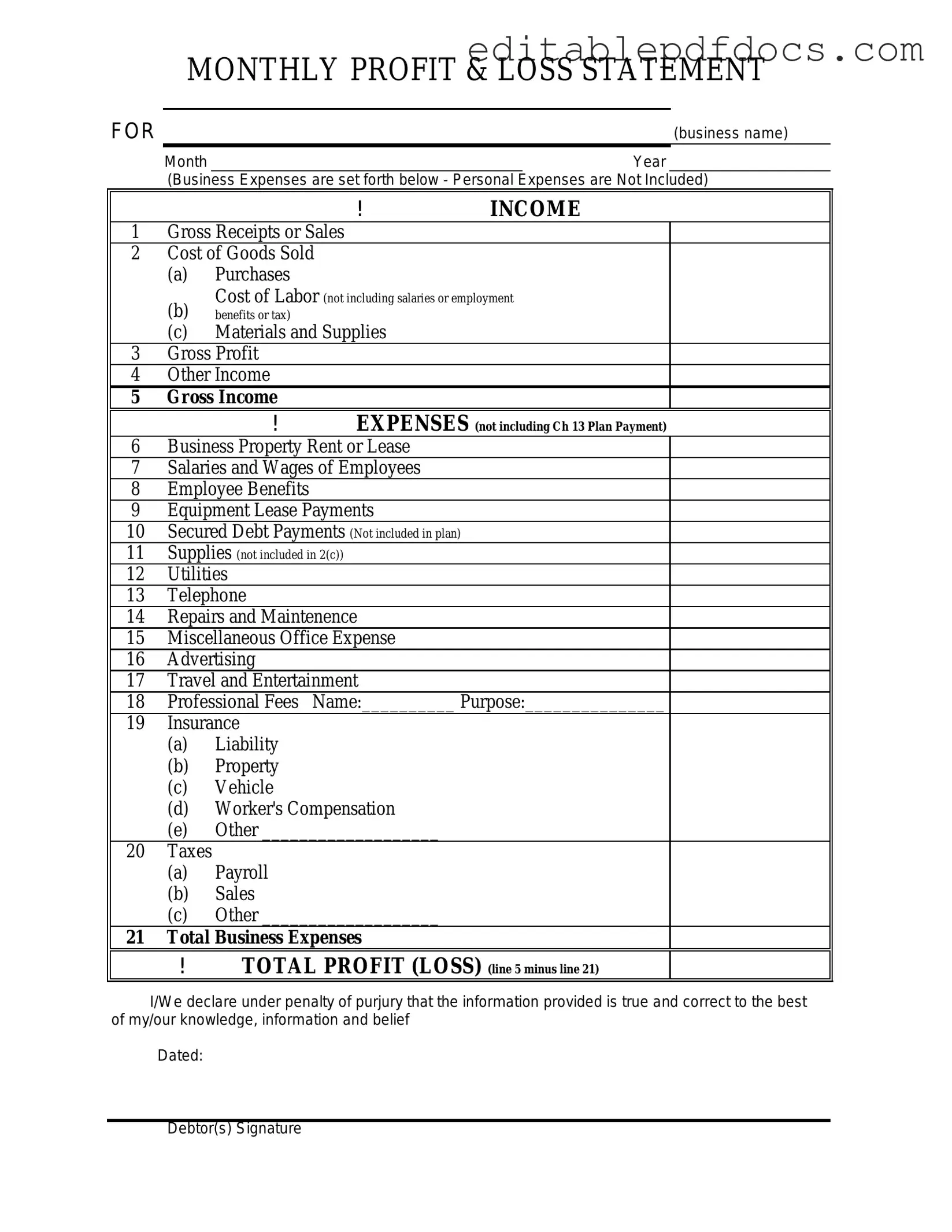Filling out a Profit and Loss form can be a straightforward task, but many individuals make common mistakes that can lead to inaccurate financial reporting. One of the most frequent errors is failing to include all income sources. It's essential to account for every revenue stream, whether it’s from sales, services, or investments. Omitting any income can skew the overall picture of financial health.
Another common mistake is misclassifying expenses. Individuals often mix up operational costs with capital expenditures. Understanding the difference between these categories is crucial, as it affects both tax liabilities and financial analysis. Proper categorization ensures that financial statements accurately reflect business performance.
Many people also overlook the importance of accurate dates. Entering the wrong date can lead to confusion about when income was earned or expenses incurred. This misalignment can result in misreporting profits and losses, impacting financial decisions and tax filings.
Some individuals fail to regularly update their forms. Financial situations change frequently, and it’s vital to keep the Profit and Loss form current. Regular updates help in tracking trends and making informed business decisions based on the latest data.
Another mistake involves not reconciling with bank statements. Failing to cross-check figures with bank records can lead to discrepancies. Regular reconciliation helps identify errors early, ensuring that the Profit and Loss form reflects true financial standing.
Additionally, people often neglect to account for non-cash expenses, such as depreciation or amortization. These expenses can significantly impact the bottom line and should not be ignored. Including them provides a clearer view of financial performance.
Some individuals also overlook the need for detailed notes. Providing explanations for unusual transactions or significant changes in income or expenses can clarify the financial picture for anyone reviewing the form. This transparency is especially important for stakeholders and auditors.
Another frequent error is not seeking professional advice when needed. Many individuals attempt to fill out the form without consulting an accountant or financial advisor. Professional input can help avoid costly mistakes and ensure compliance with financial regulations.
Lastly, people sometimes rush through the process. Taking the time to carefully review each entry can prevent errors. A thorough approach is essential for producing an accurate and reliable Profit and Loss form.
